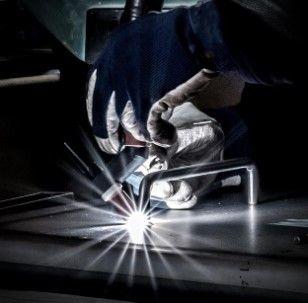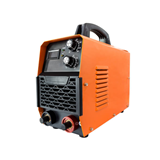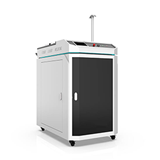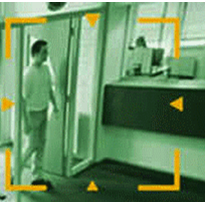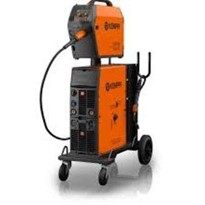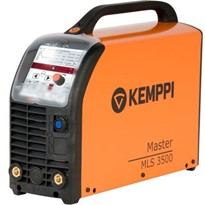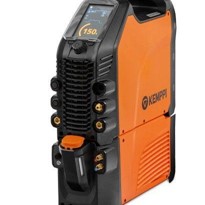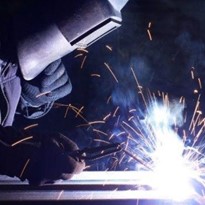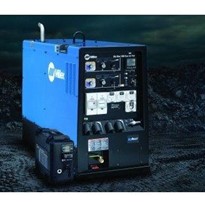The source of heat in welding is usually an arc flame produced by the electricity of the welding power supply. Arc-based welding is called arc welding.
The fusing of the pieces can occur solely based on the heat produced by the arc so that the welding pieces melt together. This method can be used in TIG welding, for example.
Usually a filler metal is, however, melted into the welding seam, or weld, either using a wire feeder through the welding gun (MIG/MAG welding) or by using a manual-feed welding electrode. In this scenario, the filler metal must have approximately the same melting point as the material welded.
Before beginning with the welding, the edges of the weld pieces are shaped into a suitable welding groove, for example a V groove. As the welding progresses, the arc fuses together the edges of the groove and the filler, creating a molten weld pool.
For the weld to be durable, the molten weld pool must be protected from oxygenation and effects of the surrounding air, for example with shielding gases or slag. The shielding gas is fed into the molten weld pool with the welding torch. The welding electrode is also coated with a material that produces shielding gas and slag over the molten weld pool.
The most commonly welded materials are metals, such as aluminium, mild steel and stainless steel. Also, plastics can be welded. In plastic welding, the heat source is hot air or an electric resistor.
WELDING ARC
The welding arc needed in welding is a burst of electricity between the welding electrode and the weld piece. The arc is generated when a sufficiently great voltage pulse is generated between the pieces. In TIG welding this can be accomplished by trigger ignition or when the welded material is struck with the welding electrode (strike ignition).
Thus, the voltage is discharged like a bolt of lightning allowing the electricity to flow through the air gap, which creates an arc with a temperature of several thousand degrees centigrade, at maximum as much as 10,000 °Cdegrees (18,000 degrees Fahrenheit). A continuous current from the welding power supply to the work piece is established through the welding electrode, and therefore the work piece must be grounded with a grounding cable in the welding machine before welding is started.
In MIG/MAG welding the arc is established when the filler material touches the surface of the workpiece and a short-circuit is generated. Then efficient short-circuit current melts the end of the filler wire and welding arc is established. For a smooth and durable weld, the welding arc should be stable. Therefore it is important in MIG/MAG welding that a welding voltage and wire feed rate suitable to the weld materials and their thicknesses are used.
Additionally, the working technique of the welder affects the smoothness of the arc and, subsequently, the quality of the weld. The distance of the welding electrode from the groove and a steady speed of the welding torch are important for successful welding. Assessing the correct voltage and wire feed speed are an important part of the welder’s competence.
Modern welding machines, however, have several features that make the welder’s work easier, such as saving previously used welding settings or using preset synergy curves, which make it easier to set the welding parameters for the task at hand.
SHIELDING GAS
The shielding gas often plays an important role in the productivity and quality of welding. As its name suggests, the shielding gas shields the solidifying molten weld from oxygenation as well as impurities and moisture in the air, which may weaken the corrosion-tolerance of the weld, generate porous results and weaken the durability of the weld by changing the geometrical features of the joint. The shielding gas also cools down the welding gun. The most common shielding gas components are argon, helium, carbon dioxide and oxygen.
The shielding gas can be inert or active. An inert gas does not react with the molten weld at all while an active gas participates in the welding process by stabilising the arc and securing the smooth transfer of material to the weld. Inert gas is used in MIG welding (metal-arc inert gas welding) while active gas is used in MAG welding (metal-arc active gas welding).
An example of an inert gas is argon, which does not react with the molten weld. It is the most commonly used shielding gas in TIG welding. Carbon dioxide and oxygen, however, do react with the molten weld as does a mixture of carbon dioxide and argon.
Helium (He) is also an inert shielding gas. Helium and helium-argon mixtures are used in TIG and MIG welding. Helium provides better side penetration and greater welding speed compared to argon.
Carbon dioxide (CO2) and oxygen (O2) are active gases used as the so-called oxygenating component to stabilise the arc and to ensure smooth transmission of material in MAG welding. The proportion of these gas components in the shielding gas is determined by the steel type.
NORMS AND STANDARDS IN WELDING
Several international standards and norms apply to welding processes and the structure and features of welding machines and supplies. They contain definitions, instructions and restrictions for procedures and machine structures to increase the safety of processes and machines and to ensure the quality of products.
For example, the general standard for arc welding machines is IEC 60974-1 while the technical terms of delivery and product forms, dimensions, tolerances and labels are contained in the standard SFS-EN 759.
SAFETY IN WELDING
There are several risk factors connected to welding. The arc emits extremely bright light and ultraviolet radiation, which may damage the eyes. Molten metal splashes and sparks can burn the skin and cause risk of fire, and the fumes generated in welding can be dangerous when inhaled.
These hazards can be avoided, however, by preparing for them and by using the appropriate protective gear.
Protection against fire hazard can be accomplished by checking the environment of the welding site in advance and by removing flammable materials from the proximity of the site. In addition, fire-extinguishing supplies must be readily available. Outsiders are not to be allowed to enter the danger zone.
Eyes, ears and the skin must be protected with the appropriate protective gear. A welding mask with a dimmed screen protects the eyes, hair and ears. Leather welding gloves and a sturdy, non-flammable welding outfit protect the arms and body from sparks and heat.
Welding fumes can be avoided with sufficient ventilation at the worksite.
WELDING METHODS
Welding methods can be classified by the method used in producing the welding heat and the way the filler material is fed into the weld. The welding method used is selected based on the materials to be welded and the material thickness, the required production efficiency and the desired visual quality of the weld.
The most commonly used welding methods are MIG/MAG welding, TIG welding and MMA (manual metal arc) welding. The oldest, most known and still fairly common process is MMAmanual metal arc welding, which is commonly used in installation workplaces and outdoor sites that demand good reachability.
The slower TIG welding method allows for producing extremely fine welding results, and therefore it is used in welds that will be seen or that require particular accuracy.
MIG/MAG welding is a versatile welding method, in which the filler material need not be separately fed into the molten weld. Instead, the wire runs through the welding gun surrounded by the shielding gas straight into the molten weld.
There are also other welding methods suitable for special needs, such as laser, plasma, spot, submerged arc, ultrasound and friction welding.


